|
A Blog about Sensory Processing Sensitivity from the Worldview of a High Sensing Male
Where is the seat of intuition and emotion? The body/mind has a mechanism to provide communication between the major visceral organ systems and the brain to give an internal sensory feedback loop. This process is called interoception. We are all familiar with environmental feedback via our sensory organs, where we interface with the external world. This is called enteroception. As HSPs, we process a good bit of this data, perhaps, more so than most people do. We also receive internally facing data from our body that provides an enormous amount of information about our internal health. Much of this information occurs below conscious awareness and provides the basis of emotion and intuition. Our ability to acknowledge this information is key to our overall health and wellbeing. What is Interoception? Interoception is all the signals from our internal organs that provide status information to the brain. It is a constant stream of information traveling mostly below our conscious awareness that provides feedback information to the right anterior insula of the brain, which also aids in the awareness of body states. This information stream is the seat of all emotion. These somatic markers occur before you are even aware of the emotion, and via interoception, help shape the feelings and subsequent behaviors that follow. Interoception supports our ‘gut’ feelings which is the main contributor of what we call intuition. These bodily signals flashing at neural speed help us provide quick feedback, particularly when reaction speed is necessary. The interoceptive systems are instrumental in helping form the sense of self and contribute to the personality formation of an individual. Is Interoception on a Spectrum? Not all people test at the same levels of body awareness. Some may be impeded by brain damage or even trauma. This is correlated with their ability to recognize and regulate their emotions. In depressed individuals, their lack of interoceptive perception contributes to their feelings of emotional numbness. In addition, the use of some drugs, medical and recreational, provides a mask to body awareness and can block some interoceptive signals. The ability to translate these impulses from the body into conscious awareness and be mindful of them is different across individuals. This ability can be measured, and there are distinctions, such as High Interoceptive Sensitivity (IS), which would lead us to believe that, much like environmental sensitivity, there is a range of IS natively that falls along a spectrum. Nevertheless, IS can be a skill that is learned via practice. Usage of techniques such as mindfulness can aid individuals in becoming more aware of the interoceptive signals and control responses such as levels of anxiety. This training would be useful in teaching emotional regulation, especially to individuals prone to high anxiety and depression. Studies show people who are better able to detect these internal bodily signals tend to be more emotional and experience emotions with greater intensity. Therefore, being more aware of these body signals can lead to anxiousness and even depressive episodes in some individuals. Development of Therapies How can one improve the awareness of such signaling to be more aware of our internal body state? There are many techniques to help turn our attention inward. I have spoken about these in other blogs. Principally, the mindfulness techniques that focus our conscious awareness on our emotions and feelings. By turning inward to experience the emotion/feeling, we can begin to refocus our attention on calming and self-soothing in a helpful and healthful way. Yoga, Tai Chi, meditation, Mindful Awareness in Body-oriented Therapy (MABT) , and brain training are excellent ways to become more aware of our internal systems. Ultimately, this leads to fuller engagement in life as our awareness becomes keener, and instead of letting emotions run us, we learn to regulate our feelings for greater overall health. Types of biofeedback, such as neurofeedback or Heart Math, heart rate variability monitoring, can give immediate feedback to help us learn to control these signals by using our conscious awareness. These therapies help improve our mental health by demonstrating a sense of control of things that we would have thought could not be controlled before training. Interoception and HSPs Since HSPs tend to be more intuitive, expressing more emotional intensity and feeling more empathy, can we consider HSPs higher in interoceptive sensitivity? Additionally, HSPs tend to be more anxious and depressed; both positively correlate with higher IS. It would seem that HSPs would be prime candidates, based on our temperamental makeup, to be likely higher in interoceptive sensitivity. Having all of those internal signals firing and our unique awareness of these bodily sensations would easily contribute to overload. Perhaps, this is one of the main reasons we experience such strong emotions and are prone to overwhelm. Learning to become aware of these signals and how to control a relaxation response would certainly help HSPs in their emotional regulation. Whether used in therapy or just incorporated into a daily practice of identifying then relaxing or releasing, these techniques could help aid in heading off overwhelm. This skillset could be another valuable tool in the HSP toolbelt. Again, this highlights the vital link between mind and body and the importance of awareness in controlling runaway emotions often unconsciously triggered by bodily functions. To be sure, more research is needed, but HSPs would be excellent test subjects. Please comment with your thoughts.
0 Comments
A Blog about Sensory Processing Sensitivity from the Worldview of a High Sensing Male
The basis of Sensory Processing Sensitivity is rooted in Environmental Sensitivity Theory. Environmental Sensitivity Theory is concerned with organisms' relative reaction to environmental factors and has several components, one of which is Sensory Processing Sensitivity. This is an important framework for people with High Sensitivity to know and understand. It helps us understand the underlying structure of why we are the way we are in many ways. We now know that sensitivity is a part of a spectrum ranging from low (dandelions) to medial (tulips) to high (orchids). Sensitivity measures our reaction to stimuli in the environment, primarily sensory inputs. So it's not only about our sensing but our perceptions and, more importantly, our responses to this stimulus. This implies that those low on the scale have less reaction to environmental change and those with high sensitivity have greater reactions to the same changes. From an evolutionary standpoint, it made me wonder, were there significant differences in how low, middle, and high sensitivity affected survival – was one group more adept at survival over the other. Was one more adapted to change than the others? What implications does sensitivity have in adaptation? Or does each group have adaptations that enhance their survival rates based on their sensitivity? More on Environmental Sensitivity Theory Environmental Sensitivity Theory is rooted in the study of organisms' reactions and adaptations to environments. The theory is based on a framework of several sensitivity models that include the Diathesis-stress model (adverse environment response), Vantage Sensitivity (positive environment response), Differential Susceptibility (some individuals are affected more by negative and positive environments), Biological Sensitivity to Context (sensitivity is impacted by environment) and Sensory Processing Sensitivity (the genetic basis of high sensitivity - HSPs). The discovery of the SPS model by Dr. Elaine Aron, suggesting a genetic basis for individuals who process environmental sensitivity at a higher rate, has led to theories on a distribution model of general sensitivity within the human population. This theory has given rise recently to the flower metaphor, in which three distinct categories of sensitivity exist within the human population. This has implications for the adaptability of all three populations that may have some consequence for survivability. Are Low environmentally sensitive individuals better adapted? The reference for low environmentally sensitive (ES) individuals is to that of a dandelion. Dandelions are hardy, grow under the worst conditions, and are seemingly prolific. Does this make them less environmentally dependent? If so, would that not make them able to adapt to changing conditions much more readily – hence, would they be more adaptable and have a greater chance for survival? Yet, I wonder if this adaptability might not serve as a disadvantage? Since they are intrinsically less sensitive to environmentals and are more prone to take more risks within the environment. Would this also not put them in harm's way more often? Might this factor lead to an early demise or embolden them to take life-altering chances? Truly there are advantages to taking risks, but also consequences. Perhaps, there are good reasons why this group only makes up about 30% of the population. Responsivity is not correlated necessarily with sensitivity, so this is pure conjecture. But behavior is often driven by perception and the likelihood of perceived success. These behaviors might make these low-sensitivity types more likely to engage in risky behavior to explore and expand their life situations. This could be a good thing. High environmentally sensitive individuals and survivability If Low ES individuals are prone to risk and high adaptability, then what could be said of the High ES (HSP) individuals? Are the HSPs readily made and better suited for adaptability because of their caution, inhibition, and sensitivity to environmental conditions? Is this like a sixth sense about safety and survival? Yet, the theories propose that High ES individuals do much worse when environmental conditions are worse (see Differential Susceptibility) than when they are good. Does that make them less productive and less prone to survive? Are HSPs because of this tendency to do poorly in less ideal conditions making them less adaptive? Are HSPs more risk-averse if the conditions are harsher? But what if the HSP's cautious and mindful Nature makes them better at navigating extreme conditions avoiding high risks, and surviving at all costs. Would that not make them better suited to survive? HSPs make up about 20 % of the human population. The broad Middle environmentally sensitive individuals Considering the extremes, both high and low ES, would that make the medial ES individuals the best group for survival? The middle group would be less likely to take greater risks in the environment, be hardier than the top group, and combine the best of both high and low. Sounds feasible, but could they be more dependent on the High and Low ES groups for leadership, counsel, and guidance? Are there more followers in the group? Are they happier, more satisfied, and less likely to make changes because of their relative satisfaction? Again, this is all speculative—so many questions. Are the Low and Middle ES people, in some ways, dependent on the High ES group? As I have stated multiple times, Dr. Aron and others believe that Nature has baked in the High ES trait into the population for evolutionary/survival reasons. Could the High ES group be the wise and mindful group that, through the normal reactions to the environment, serve as the proverbial "canary in the coal mine?" Because of our sensitivity to environmentals, does this make us well suited to serving that purpose of divination, sage guidance, and early warnings? And would that make HSPs better advisors than leaders? What role does EST play in informing about this notion? I wonder if, in some ways, HSPs are more evolved humans. Better adapted to the best conditions, prone to thrive in the best conditions, and as a group a biomarker for seeking and living in the best conditions. Does EST say something about this? Does The larger population really need HSPs to survive? I guess that all three groups perform specific functions to aid in the survival of the larger group. Based on the EST model, it would seem that each group continues to survive because they serve a particular function for the aggregate. Each group is designed to adapt based on their requirements and would enhance the overall survivability of the species, covering the other weaknesses. I suppose every garden needs its dandelions, tulips, and orchids to thrive. Perhaps, that's how Nature has designed it. Please comment with your thoughts. A Blog about Sensory Processing Sensitivity from the Worldview of a High Sensing Male
Like many Highly Sensitive People, I often ask a simple question, “What’s wrong with the word Sensitive?” I mean, it’s a word with multiple meanings, but the one that we home in is the one that tells the story of our lives. Unfortunately, it is the one-word trait that is more often than not used in the pejorative to describe our nature that is either abhorred or tolerated by less sensitive folks. We live in a culture that values emotional detachment, stone-cold decision making, logical, warrior-like capabilities that seem so distant from the core behaviors of the clan of highly sensitive people. Our culture views sensitivity as a weakness, a lack of discipline, control, or maturity. An unfair and false assessment, if there ever was one. This judgment is especially hard on HSP males, who already have difficulty with the trait in lieu of expectations the culture sets for masculine behavior. Technically our trait is called sensory processing sensitivity, which is tied directly to environmental sensitivity theory. It embraces the notion that environmental sensory sensitivity is expressed on a spectrum from high to low. The term sensory processing sensitivity is a mouthful but sounds much more palatable than just plain “sensitive.” Yet, here we are, almost thirty years after Dr. Aron coined the term highly sensitive persons, and we still struggle with the concatenation of that sensitive moniker. Sensitive men struggle with the brand. Stacked up against their non-HSP peers, it does make them seem to be, well, less masculine. But, what does sensitive really mean? We know the term has multiple meanings, but why do we choose the most degrading definition. We need to do some serious renovation on how the term sensitive is used, dig a little deeper and put some fine points on the explanation of the term to truly capture the complex nature of high sensitivity and reframe the meaning. Definition of Sensitive As stated above, the definition of sensitive in Webster’s is multi-tiered. I’m not going to recite the definition verbatim but will recap the main descriptions. The first definition is as an adjective referring to SENSORY. That’s it, one word - sensitive is a sensory-based term. So far, so good. The second definition states that sensitive is receptive to sense impressions. Again, good. That makes everyone sensitive. The third definition starts to get to the heart of the matter; highly responsive or susceptible to a) easily hurt or damaged – especially emotional hurt. Or b) delicately aware of attitudes and feelings of others. Now notice the keywords – hurt, damaged, and delicate. Not exactly how I’d like to be described when I say that I am sensitive. When we move to the noun definitions, we get: 1) a person having occult or psychical abilities. Or, and here it is 2) a sensitive person. Nowhere is the definition describing sensory processing sensitivity, not even like - one with the personality trait of sensory processing sensitivity. So when you have a word that describes over a billion people on the planet and no specific description of them or accounting of them in the dictionary, that’s why we have a problem with the word sensitive. Even in the Urban Dictionary, there isn’t a clear definition of the popular cultural definition of sensitive that accounts for HSPs. Yet, all HSPs are aware of the stigma that goes with the term sensitive, as it is popularly used to describe people with HSP characteristics. For example, we are often seen as emotionally weak, neurotic, or drama kings or queens. As for HSP males, we are seen as effeminate, ineffectual, and often self-absorbed and odd. None of this, of course, is true. I sometimes think we are often framed by the least sensitive people by these worst possible definitions simply because they cannot see, hear, feel, smell, and taste the world the way we do. Their ignorance drives the narrative about who we are. Their impatience with our deep processing ways exceeds their capacities to value our thoughtfulness. Their lack of empathy causes their name calling, and their largely extraverted ways do not tolerate our need for solitary solace. So this lower twenty percent, although more adaptable, yet less environmentally sensitive, are calling the shots…for now. Reframing the word “Sensitive” It’s not likely that we will be able to rename the trait to something that describes us in better ways. We are too far down the road for that. And, I do not, repeat, do not fault Dr. Aron for her choice of words. It was a command decision at a point in time, it fit, and she went with it. And that is what we have to work with. We can make the term more acceptable within the HSP community first. We have to have a definition that is empowering and something we can all get behind. The challenge is creating either a derivative of sensitive or perhaps developing a description that evokes the gifts and a certain degree of positivity to the word without losing the original intention depicting a highly sensitive person. The new sub definition of sensitive should be focused on strong words that imply the strengths and sensitivity of HSPs that suggest giftedness and normality. For HSP men, associating these positive descriptors will help in allowing more HSPs men to embrace the trait when seen in the light of its positive attributes. We almost need a collective push to get that idea out there. How to make the word more palatable. The next step is to socialize the new definitions to the masses. I like Dr. Tracy Cooper’s idea of metaphorically describing high sensitivity to a finely tuned measuring device. It reinforces the precision in which we sense the world yet implies a quirkiness that often occurs in such finely tuned tools as finicky but very environmentally sensitive. The upside and the downside go together, with the downside needing a bit more attention, but knowing that it does not negate the worth of the tool. By socializing such metaphors and descriptions, we can teach the strong traits of HSPs and their practical use to society (as implied by our evolutionary purpose). We can then build acceptance within the non-HSP audience. Most importantly, we need to empower HSP men to feel good about the term considering the definition limitations of present masculinity. And, with that, HSP men need to own the word sensitive and proudly speak of it. Addressing the sensitivity deniers There will always be those who deny that highly sensitive is a personality trait, often referring to it as a splash of common disorders. Even among the scientific community, there are doubters. Nevertheless, we can only do what we can do by planting seeds based on the emerging validating science. Looking at the spectrum of sensitivity, we should move forward educating the top 20 percent of the population that are HSPs. This group will be the low-hanging fruit. It may be necessary to convince even some of our own about the trait and sell them on its positives. The challenges within the trait are there too. We need to educate and train HSPs on coping and living with high sensitivity, showing them there is a benefit to being an HSP. It’s hard to realize the gift when you are constantly fighting fires. Next, we move to the big middle – the hump in the bell curve—the big 60 percenters. The upper 30% of that population will be the most like us, and I think they will be most open to accepting the trait in others and to some degree within themselves. So this group, together with us, represents the upper 50 % of the environmental sensitivity spectrum. This is where the greatest work will be done – acceptance of terminology and the trait. And the reframing of sensitive. The next 30 percent of the spectrum is on the downslope of the curve. We may be able to make some inroads here, but as the curve slopes downward, we will not receive complete acceptance, but we can convince some with persistence. Then, finally, the lower 20 percent. I think this will be a waste of time. We may never be able to convince them of the science, they see the world from their own lens, and it likely has no tolerance for highly sensitive people. Let them go. We should use metaphors and analogies to explain the trait in reaching out to others. For those that can comprehend the science, feed them that too. We can mix, match, and develop parables that everyone can relate to in describing who we are and why we are designed this way. Acceptance comes from understanding. Since language is the currency here, precise and uniform terms are important. That’s why I believe reinventing the term sensitive is less likely than reframing. Finally, realize this is going to take some time. Maybe a long time. Perhaps, generations to let the message sink in. Share with the young first. We are helping shape opinions for the next generations. This effort may seem trivial, but it’s important not only for HSPs but for humankind. Well, now the cat’s out of the bag, we don’t get do-overs… The cat is out of the bag, and the horse is out of the barn as the sayings go. Coming up with other terms may be difficult, and I’m not sure after nearly thirty years, we want to do a reset on the base term. Then, perhaps, new names will arise and be cast for the trait as more research is made available. But, for now, let’s work with what we have. There is nothing wrong with the word sensitive. My short-term advice is to try not to be, well, sensitive about the word sensitive. And that includes me. We need to start showing some pride in the trait as a group. Be armed with facts and science to shield against taunts and doubters. Stay calm, and don’t let emotions run high. We can do this if our message is consistent and persistent. Please comment with your thoughts. A Blog about Sensory Processing Sensitivity from the Worldview of a High Sensing Male
I have been attracted lately to the Chinese philosophy of Taoism. Attributed to Lao Tzu, the Tao Te Jing, or the book of The Way, is a wise book that instructs its readers on how to live life in harmony and balance. It is a small book filled with paradoxes, carefully crafted wisdom, and cryptic metaphors. Still, the passages make sense at a very deep and spiritual level with careful consideration and thought. As an HSP, the teachings resonate with me, and I have been applying some of the key elements into my life. It is indeed a practice. Like Buddhism, Taoism is a philosophy of life more than a religion without deity or dogma. The Tao represents all that is, yet it is not a thing, more like a pervasive, all-encompassing energy, incomprehensible and mystical. Yet, Lao Tzu encourages us to keep an open mind, allow the Tao to flow through us, and let go of egoistic control. I believe there is value for highly sensitive people to connect to the spiritual side of life. I have noted below ten basic tenets of Taoism from the Tao Te Jing, which with practice can become a part of a philosophy to live by. There is no need to abandon your current religious or spiritual practice as the Tao is versatile either as a philosophy or a spiritual practice. I have borrowed much from an online post by Kyle Kowalski at Sloww.co . Props to him for compiling this list. Here are the ten principles from Taoism to bring to your life.
Understanding the source of all that is, is an overwhelming feat. Life too often overwhelms us with its myriad challenges and obstacles. Learning to be connected with the Tao is a life lesson that enables one to “just be.” In a world of doers, letting go to “just be” is a remarkable acknowledgment that you don’t have all the answers on your own. The wisdom you seek is within the Tao.
The Taoist philosophy can be practiced without relinquishing your existing spiritual beliefs. On the surface, the writings appear to be obtuse and paradoxical, mysterious, and yet accessible for those who allow the flow to occur. For HSPs, self-reflection, solitude, peace and harmony, and the idea of “being” not “doing” seem natural for our personalities. The key to following the Tao is not to overthink the readings, let go of control, and learn to be in the flow. Like flow, it’s hard to describe, but once started on that path, it becomes easier and easier to grasp. In my view, it’s a perfect practice for our highly sensing, thoughtful, and spiritual natures. Please comment with your thoughts. A Blog about Sensory Processing Sensitivity from the Worldview of a High Sensing Male
In this article, I’m going to have some fun with prefixes. None of the words I’ll be talking about currently exist. Likewise, there is no evidence that any of the derivations of sensitivity exist or have been identified and named. This word exercise is just some experimental fun in word creation. Who knows, maybe someday these descriptors will be a thing. Please take this in the same spirit it is offered. In the past, I have described the various levels of sensitivity. (see Blog) The idea that sensitivity falls on a spectrum has gained traction lately with the Flower Metaphor. To quickly summarize, those individuals with the highest levels of environmental sensitivity are classified as Orchids, corresponding to the particular environmental requirements that Orchids thrive in. Next, we have Tulips, a hardier plant representing the vast middle of the sensitivity spectrum. Finally, we have the Dandelions, the least environmentally sensitive individuals, yet the sturdiest. But can we get even more granular than that? Yes, I think, with a little imagination, we can delineate even more types of sensitive folks. So take this commentary for what it is, part tongue in cheek and part quasi-scientific. The Broader Spectrum of Sensitivity In this post, we continue to elaborate on the sensitivity spectrum. Sensitivity applies to all humans. It is a human characteristic. To be more precise, we term high sensitivity at the top end of the sensitivity spectrum, the top twenty percent of the range. Can we account for some deviations of sensitivity not yet named? Does that add more gradation points on the spectrum? Using common prefixes and attaching them to our base word of sensitive, can we fine-tune even further the sensitivity curve to account for some uncommon types of sensitivity? Let’s see. How about the term – Asensitive? According to Webster’s the use of the a- prefix turns the term it precedes into not or without {term}. In the case of our exercise, would an asensitive person not be sensitive? Or could it be a highly sensitive person who removes themselves from the environment so as not to be sensitive? These individuals might be sensitive averse. They might display avoidant behavior to overwhelm, overstimulation, or withdraw simply to avoid too much sensory stimulation. How would you describe an asensitive person? What about the term Unsensitive? This term is not to be confused with insensitive, also called rude or cold. An unsensitive person would be, according to our word building lexicon, a person who would be the opposite of a sensitive person. It could mean the person was removed from being sensitive or ceased to be sensitive. For example, would a narcissistic person be unsensitive? Would an unsensitive person be described as thick-skinned? As opposed to the thin-skinned, highly sensitive person? Is an unsensitve person less focused on others (agentic) and a sensitive person more communally focused? Would unsensitive persons be genetically predisposed to being less empathetic? Does unsensitive correspond to the term unempathetic? What do you think? Could there be a term like Dis-sensitive? If so, what would be the difference between an unsensitive person and one that is dissensitive? One distinction might be that unsensitive people can be negatively sensitive and sometimes even hypersensitive as long as the stimulus is directed directly to them or about them. For example, even narcissists can be sensitive to criticism. Yet unsensitive people are still not able to be empathetic to others. The dis- or dys- prefix added to our term sensitive would imply that deprivation of sensitivity might be at play. Or perhaps a deliberate or constructed absence of sensitivity. Dissensitive people might be unaffected by their sensitivity either by mental health issues or sometimes a type of personal choice to simply not show any sensitivity to the environment, perhaps because of an extreme environmental upbringing. Kind of an artificial boundary issue in the extreme. And finally, what the heck would auto sensitive be? Here’s one we could have a lot of fun with. Adding auto to our root word might make this person self-taught on sensitivity or imply some type of automatic behavior regarding sensitivity. This might be someone who has learned to be sensitive beyond their normal place on the spectrum, hypersensitive or even highly sensitive. This individual may not normally be highly sensitive but uses elevated sensitivity to garner attention because it creates a reaction. Or maybe they have histrionic personality disorder, and it appears they are extremely sensitive to everything. Or is this even possible? Okay, so this little exercise has been fun. As more research comes out about sensory processing sensitivity, we’ll learn more about the trait and even some of the differentiation patterns. It may add even more granularity to the spectrum and cast light on deviations of normal sensitivity. Perhaps some words/terms will be used, but with more refinement. It may never look exactly like this or even at all, but I do believe at some point, we will start to see more detailed typology within the HSP community. What other terms might you use in describing sensitivity? Jot them down in the comments section. Please share your thoughts in the comment section. |
AuthorBill Allen currently lives in Bend, Oregon. He is a certified hypnotist and brain training coach at BrainPilots.com. He believes that male sensitivity is not so rare, but it can be confounding for most males living in a culture of masculine insensitivity which teaches boys and men to disconnect from their feelings and emotions. His intent is to use this blog to chronicle his personal journey and share with others. Archives
July 2024
Categories
All
|
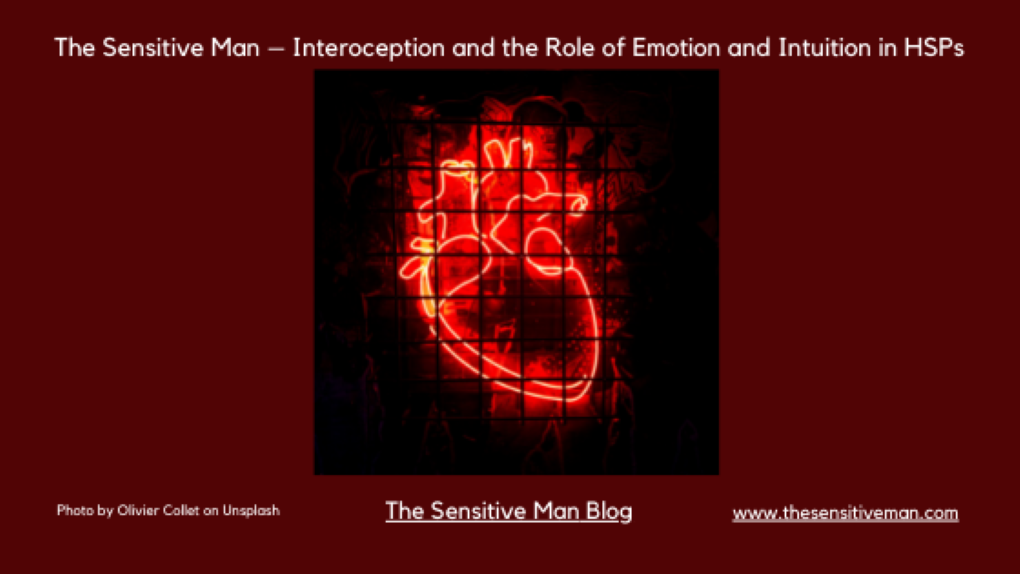
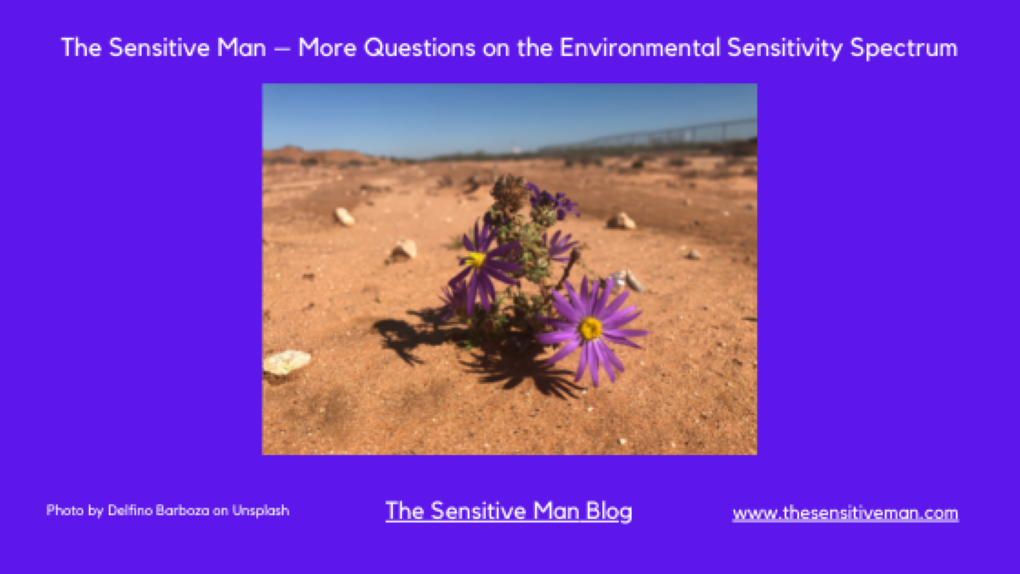
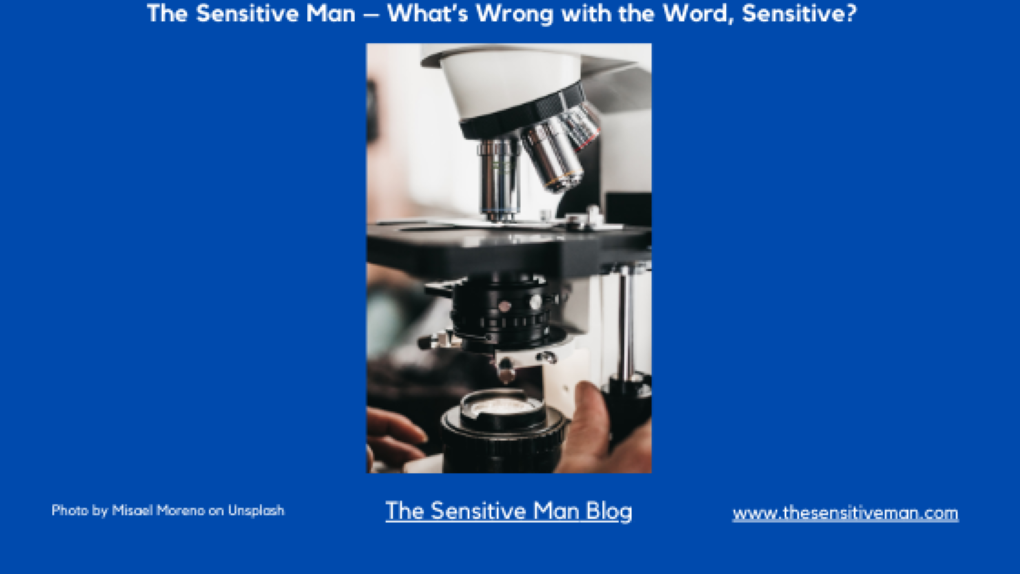
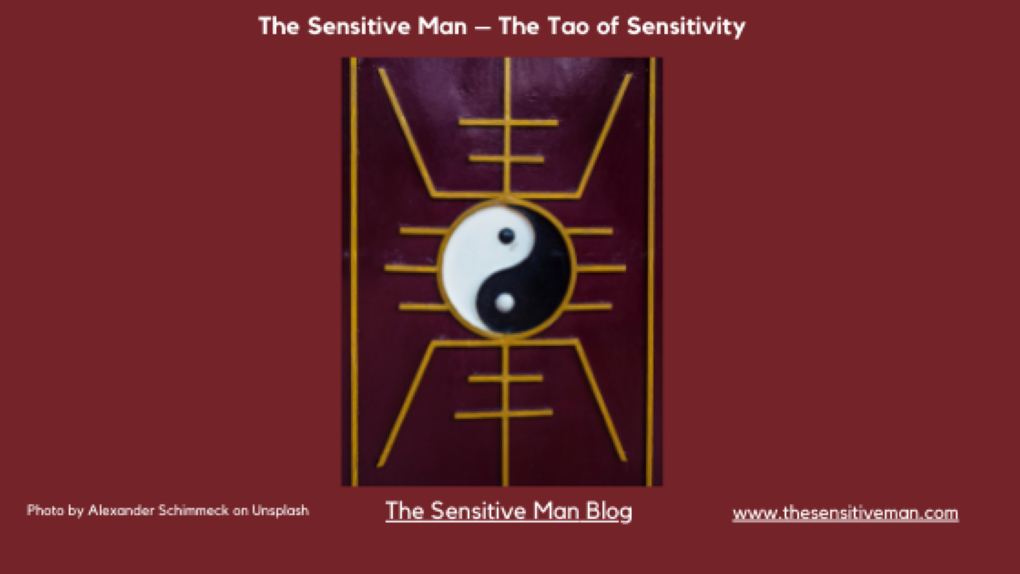
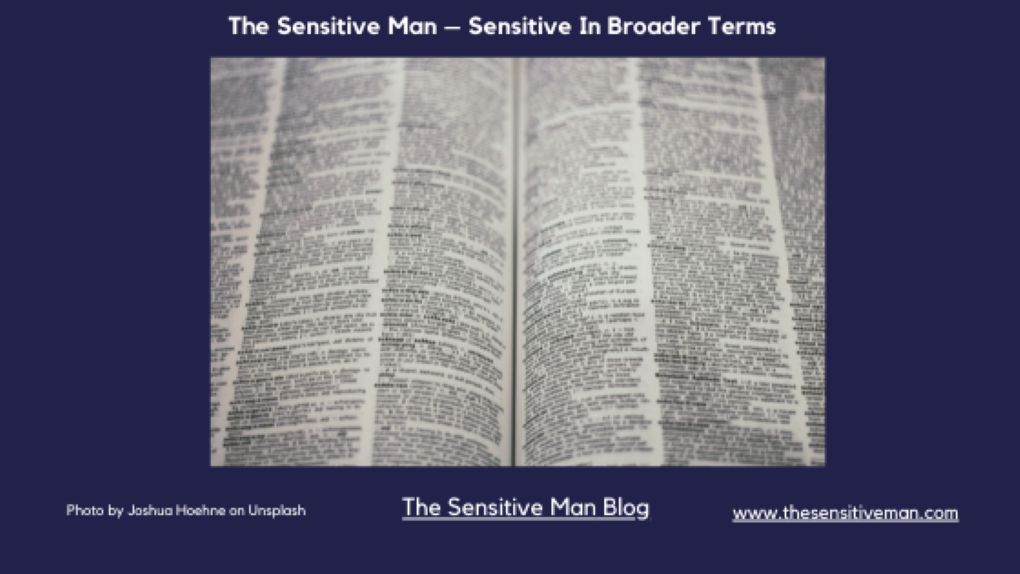

 RSS Feed
RSS Feed
